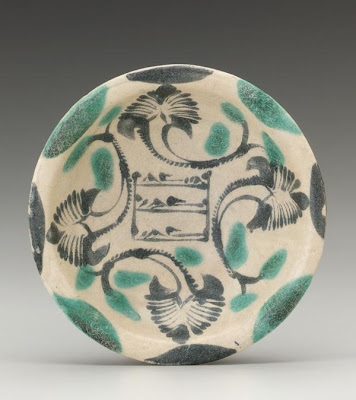With the holy month of Ramadan approaching fast, here are a few examples of 9th to early 13th Century Islamic ceramic bowls. Thousands of year back in time and yet they have
something of the Arts and Crafts movement, a little Neisha Crosland
with a hint of the Bloomsbury Group and Lucienne Day about them, see if you agree

Bowl Iran, Nishapur or Turkestan, Afrasiyab Bowl, 10th century Ceramic; Vessel, Earthenware, underglaze slip-painted, 2 3/4 x 7 3/4 in. (6.99 x 19.69 cm) The Nasli M. Heeramaneck Collection, gift of Joan Palevsky (M.73.5.186) Art of the Middle East: Islamic Department.

Bowl Iran Bowl, 9th-10th century Ceramic; Vessel, Earthenware, tin-glazed and stain painted, 2 1/2 x 8 in. (6.35 x 20.32 cm) The Nasli M. Heeramaneck Collection, gift of Joan Palevsky (M.73.5.133) Art of the Middle East: Islamic Department.
Bowl, second half 12th–early 13th century, Iran
Stonepaste; polychrome inglaze and overglaze painted on opaque monochrome glaze (mina'i)
from The Metropolitan Museum of Art

Bowl , Iraq, 9th century Abbasid period
from Freer and the Sackler (Smithsonian) Museum
See many more examples of Islamic Ceramics from the Islamic Arts website here
No comments:
Post a Comment